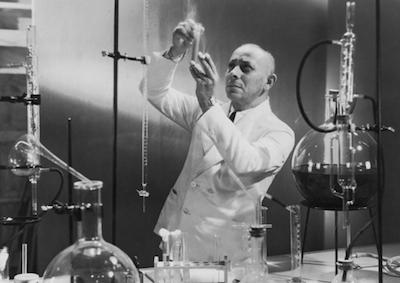As a travesty of Edgar Allan Poe, The Crime of Doctor Crespi occupies a certain niche between Universal’s earlier literary deviancies (The Black Cat, 1934; The Raven, 1935) and American International’s abundant market-driven liberties in the 1960s (House of Usher, 1960; The Conqueror Worm, 1968 et al). Summarily dismissed by Winfield Sheehan while directing Walking Down Broadway at Fox in 1933, Erich von Stroheim was forced to subsist by cadging pennies on Poverty Row in thankless roles for Monogram and Invincible. Hungarian émigré John H. Auer summoned him to New York for The Crime of Doctor Crespi, a ragtag riff on Edgar Allan Poe’s “The Premature Burial,” filmed on a shoestring in the Bronx. It’s plot shares sexual peccadilloes with two superior horror pictures released in July, ahead of Crespi’s October bow. Eschewing the heady romanticism of Bela Lugosi’s Dr. Vollin in The Raven and the Krafft-Ebing aspect of Peter Lorre’s Dr. Gogol in Mad Love (1935), von Stroheim’s equally ruthless mad doctor appears superficially more practical. Likewise motivated by sexual desire, Crespi removes obstacles to his carnal objectives with brutal determination, savoring the sadistic destruction of his rival while offering sly solace to the conquered wife.
Independently produced by director Auer, it was the first film to be released under the Republic Pictures brand and Auer would remain with Republic right up to the company’s demise in the 1950s. With von Stroheim’s megalomaniacal surgeon indulging his audience persona as “The Man You Love to Hate,” Crespi also accommodates homage high and low. It rekindles the grotesqueries of The Wedding March (1928) and nods to Carl Th. Dreyer and Universal monster movies with a Vampyr-inspired cemetery trek and the casting of Dracula (1931) and Frankenstein (1931) sidekick Dwight Frye as an unorthodox hero. An unprepossessing actress named Jeanne Kelly has a forgettable bit role as the desk nurse; who would guess that, rechristened Jean Brooks, she would make an indelible impression as Jacqueline, the doomed devil-worshipper of Val Lewton’s The Seventh Victim (1943)? —Scott MacQueen
Director: John H. Auer. Production: JAH Productions, Liberty Pictures Corp. Distribution: Republic Pictures Corp. Producer: John H. Auer. Screenwriters: Lewis Graham, Edwin Olmstead, John H. Auer. Based on the short story “The Premature Burial” by Edgar Allan Poe. Cinematographer: Larry Williams. Art Direction: William Sualter. Editor: Leonard Wheeler. Cast: Erich von Stroheim, Harriet Russell, Dwight Frye, Paul Guilfoyle, John Bohn. 35mm, b/w, 63 min.
Restored from the incomplete original nitrate picture and track negatives, reels of a 35mm nitrate French dupe negative, reels of a 35mm acetate fine grain master and an original 16mm reduction print. Laboratory services by The Stanford Theatre Film Laboratory, Audio Mechanics, DJ Audio, Simon Daniel Sound. Special thanks to: David Shepard—Film Preservation Associates, Inc.; Academy Film Archive; Greg Luce—Sinister Cinema.






 Mobile Navigation
Mobile Navigation

